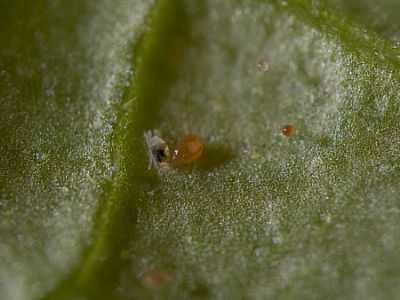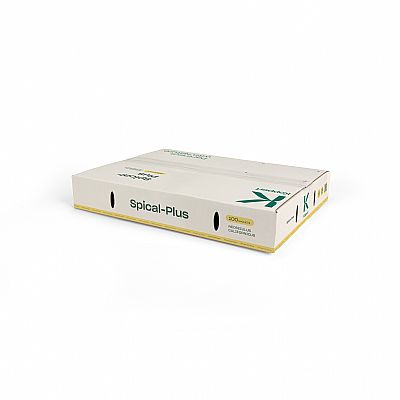SPICAL PLUS / Neoseiulus californicus (form. Amblyseius californicus)
Predatory mite
Target
Use Spical - Plus for biological control of:
-
two spotted spider mite (Tetranychus urticae)
-
fruit spider mite (Panonychus ulmi )
-
citrus red mite (Panonynchus citri)
-
begonia mite (Tarsonemus pallidus)
-
broad mite (Polyphagotarsonemus latus)
Packing
-
Box with 100 sachets
-
Box with 500 sachets
Each sachet contains 100 predatory and storage mites (all stages) mixed with bran
Dosage SPICAL - PLUS
|
Rate (ind./m2)
|
m2/ unit
|
Frequency
|
Interval (days)
|
Remarks
|
|
|
Preventive
|
-
|
2,5
|
-
|
28-42
|
|
|
Light curative
|
-
|
2,5
|
-
|
28
|
In combination with SPIDEX
|
|
Heavy curative
|
-
|
1
|
-
|
28
|
In combination with SPIDEX
|
The information given below is merely indicative. Tailored advice can be provided if information is available on the local factors that need to be taken into account, such as the crop, the climate conditions and the level of infestation. For the correct approach, please consult a specialist of our company.
How does Spical - Plus work
Adult predatory mites, nymphs and larvae actively search and consume their prey.
Application Spical - Plus
-
Hang sachets in the crop
-
Sachets already have an exit hole
-
Hold sachets by the cardboard strip at the top, to avoid damaging the predatory mites
-
Neoseiulus californicus tolerates a range of chemical pesticides
-
Always use Spical - Plus in conjunction with Spidex
-
Introduce Spical - Plus when the pest is to be expected or first signs of pest presence is visible. Use Spidex for hotspot treatments.
Best working conditions Spical - Plus
Neoseiulus californicus tolerates high temperatures and low humidities. It targets all stages, but prefers younger stages. Predatory mites also survive on other mites and pollen and can survive for a number of weeks without food.
Handling
Biological beneficials have a very short life expectancy and therefore need to be introduced into the crop as soon as possible after receipt. Failure to do so can have a negative impact on their quality. In case you do need to store Spical - Plus, please follow the instructions below.
Storage
-
After receipt: 1-2 days
-
Storage temperature: 17-20°C/63-68°F
-
In the dark
-
Provide ventilation to prevent CO2 accumulation
Pesticides can have (in)direct effects on beneficials. Check here




 HellasSITES
HellasSITES